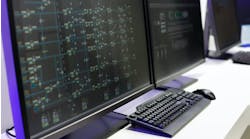Remote access is a lifeline—and great opportunity—for machine builders
Remote connectivity has created a lifeline between machine builders and their customers during the pandemic, allowing support to be provided from afar at a time when travel and plant-access have been scaled back.
But if you’re a machine builder, remote access is more than a way to connect with customers—it’s an entirely new way to do business; one that can help you strengthen customer relationships, transform how you support machines across their lifecycle, and generate new revenue streams.
Demand for remote machine access is likely to remain strong. Not only are many end users still trying to limit on-site visitors, but difficulties in finding and retaining skilled workers are making outside support critical. Many end users are also eager to maximize the value of their smart machines and other digital-transformation efforts, especially in areas like maintenance.
With remote machine access, you can address customers’ support needs and help them get more from their smart machines. Consider the following benefits:
More responsive support
It’s a familiar story: a customer’s machine breaks down and the downtime adds up while a technician tries to troubleshoot and diagnose the issue—over the phone—with your support engineer. And if your support engineer can’t resolve the issue on the phone, they need to fly out to the customer’s site to investigate the issue themselves.
Suddenly, what may have been minutes or hours of downtime turns into days. And the financial hit to the end user includes not only the lost production time but also the cost of a roundtrip flight and several hours of engineering support.
With remote access, your support engineer can instantly access the machine’s diagnostics and troubleshoot the issue in tandem with the customer. No more long, confusing phone calls to figure out what happened. And no more long, costly flights to fix issues.
More efficient commissioning
Not only does on-site commissioning require the time and cost of sending engineers on-site, but the process itself can be inefficient. Too often, a lack of coordination between teams like machine engineers and electricians results in them having unproductive downtime on site. This can lead to commissioning projects taking days or weeks longer than necessary.
With remote machine access, your engineers can provide commissioning support on demand, when they’re needed, from a central location. And the reduced travel and downtime at customer locations can help make these engineers more productive, enabling them to provide more support to more customers.
Production optimization
Remote access creates opportunities to play a more active role in your customers’ operations, such as by supporting their continuous-improvements efforts.
By combing through historical data from a machine’s control system, you can uncover opportunities to increase efficiencies. For example, you can pinpoint areas like a specific safety door or work shift that are associated with higher levels of downtime. Then, you can work with your customer to determine what action—like a process change, design improvement or workforce training—can help resolve the issue.
You can also use historical machine data to improve your offerings. Imagine a customer is adding a line in a plant and orders the same machine they purchased three years ago. Instead of supplying the same machine, you could analyze the existing machine’s diagnostic and performance data for the last three years and deliver an improved, higher-performing version of the machine.
Software and firmware management
Another area where remote access can expand your role in customer operations is software and firmware management.
Today, keeping production software and firmware up to date is more important than ever. It can help make sure customers have the latest patches for cybersecurity threats. And it can give customers access to the latest features in their production technologies. However, software and firmware management come with challenges. End users can lose track of which versions are deployed across their enterprise. They can miss updates. And they may not always have resources available to deploy new versions.
Using remote access, you can monitor if customers are using the latest software and firmware versions in their operations—and even push updates when they’re available.
Implementation considerations
When building remote connectivity into a machine, you have several things to think about.
Minimizing the impact of remote connectivity on machine design is one concern. That’s why prebuilt remote-access solutions can be attractive; they package together everything you need to establish a remote connection, leaving the complex engineering work to the solution designer instead of the machine engineer.
Cybersecurity is also essential. The remote-access solution you use should be certified to the global security standard ISA/IEC-62443-4-2 and incorporate robust capabilities such as multi-factor authentication and encrypted protocols. It should also give end users the option to enable and disable remote connections locally.
Your policies and procedures will also need to be updated if you’re introducing remote services. For example, good cybersecurity hygiene will help protect remote connections. Certifying that you meet the ISO 27001 information-security standard can give your customers confidence that you’re using the highest global standards for information security.
Reimagining support
Introducing remote services also requires rethinking how services are offered overall. For example, you likely offer free phone support for your machines today. A remote-service offering is more responsive and engaging and warrants a price tag. But how much? And will the service be provided only during business hours or around the clock? Will you guarantee that you respond to customer needs in a specific timeframe?
Addressing questions like these can help you develop and differentiate your remote-support offerings.
By Justin Garski, North America OEM segment lead and Oliver Haya, commercial product manager, with Rockwell Automation



